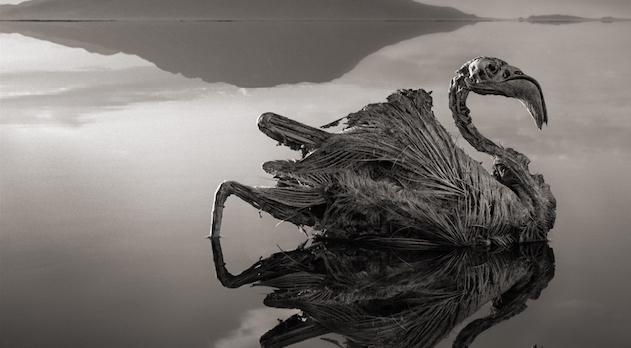
IUCN considers the Committee should note this proposal and keep the situation under review. It is understood that the East Africa Community has discussed this issue and the proposal has effectively been dropped for the time being. In the case of repeated droughts the wildebeest population would drop to below 200,000, from which it cannot recover, as predator control would take over.

Since a drought on the average occurs every ten years, the wildebeest would never recover. The recovery rate in such a situation will be between 15 and 20 years. For more severe water extraction rates the model predicts a death rate of 50%. In such a one-off situation, without considering the possibility of a higher water diversion by the Kenyan authorities, the Amala weir diversion scheme is predicted to result in the deaths of at least 20% of the wildebeest, over and above the normal die-off of 10-20% during such a drought. a year where the annual rainfall is 30% below the long-term mean). The effect is predicted to become significant once a drought occurs (i.e. It showed the effect of the Amala weir water extraction scheme will only be negligible when rainfall is average or above. The model used several extraction rates to show the impacts on the wildebeest population. Modeling the Impact on the Serengeti Ecosystem of the Proposed Amala Weir Water Diversion Project in Kenya). In June 2001, Tanzania National Parks, together with the Frankfurt Zoological Society and the Australian Institute for Marine Science developed an ecological model to test the possible impact of the Amala weir water diversion project on the Serengeti Migration (Gereta, E., Wolanski, E., and Borner, M., 2001. Even under normal climatic conditions the project might endanger the Serengeti World Heritage Site and impact tourist revenues in Tanzania and Kenya.Consequently, there would be unpredictable pressure on the demand for channelling all available Mara water into the Ewaso Ng’iro Hydroelectric project. There is concern that though the ENP makes allowances for maintaining some water flow in the Mara River, even during severe droughts, these drought times would also produce the worst power shortages in Kenya. If the Mara River were to dry up, most of the wildlife migrants would perish and the Serengeti Migration would collapse irreversibly.This was an important feature of the inscription of this site. Presently the Serengeti Migration consists of approximately 1.2 million wildebeest and 200,000 zebras. Wildlife numbers in this system are controlled by the dry season rainfall (and consequent grass availability) in the Mara River system. The main feature of the Serengeti Ecosystem, which extends across several protected areas, including the World Heritage site, is the wildebeest migration.IUCN has received a report by the Frankfurt Zoological Society, which notes potential impacts of the project, if implemented, on the conservation of the Serengeti National Park:


Potential impacts, if implemented, include downstream effects on Lake Natron in Tanzania (possible extension to the proposed Rift Valley Lake Reserves World Heritage site) and potential ecological impact on the Serengeti National Park.
LAKE NATRON HUMAN DEATHS SERIES
There have been a series of Environmental Impact Assessments and discussions on the ENP which have held its implementation up. This scheme, if implemented, would link the Mara River system through a 3.5 km tunnel with the upper drainage of the Ewaso Ng’iro (south) River, thus reversing the Mara’s flow into the Ewaso Ng’iro River, finally draining into Lake Natron in the east instead of Lake Victoria in the west. The State-owned Kenya Electricity Generating Company is proposing to build three dams along the Ewaso Ng’iro River that would generate 180 MW of electricity and is expected to cost 350 million dollars by the time of completion in 2007. The Centre and IUCN have received several reports concerning the proposed Ewaso Ng’iro Hydroelectric Project (ENP) in Kenya, and its potential impacts on the Serengeti and Mara ecosystems.


 0 kommentar(er)
0 kommentar(er)
